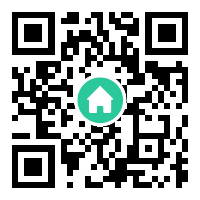Understanding Telegram Login: A Secure gateway to User Authentication
Telegram Login has emerged as a streamlined and privacy-focused method for users to access third-party websites and applications. By leveraging Telegram’s robust encryption and user-centric design, this authentication mechanism allows individuals to sign in without creating new passwords or sharing excessive personal data. As digital security concerns grow, Telegram Login offers a compelling alternative to traditional login systems, balancing convenience with cutting-edge privacy protections.
How Telegram Login Works
The Telegram Login process operates through the Telegram Open Network (TON) and utilizes OAuth 2.0 protocols. When a user selects "Sign in with Telegram" on a supported platform, Telegram generates a unique authorization request. This triggers a secure handshake between the application and Telegram’s servers, verifying the user’s identity through their registered phone number and encrypted session data. Unlike conventional social logins, Telegram does not share email addresses or contact lists by default, adhering to its strict data minimization principles.
Security Advantages of Telegram Login
Telegram Login distinguishes itself through end-to-end encryption and optional two-factor authentication (2FA). Each login attempt creates a temporary cryptographic key, ensuring that even intercepted data remains unusable to attackers. Furthermore, Telegram’s decentralized server infrastructure reduces single points of failure, making large-scale data breaches significantly less likely. Developers implementing Telegram Login also benefit from built-in bot detection systems that thwart automated credential-stuffing attacks.
Integration and Developer Flexibility
For developers, integrating Telegram Login involves using Telegram’s Bot API or ready-made SDKs for web and mobile platforms. The system supports customizable permissions, allowing apps to request specific user details like profile names or photos—only with explicit consent. A notable feature is the "One-Time Password" (OTP) variant, which sends a time-sensitive code via Telegram messages, eliminating reliance on SMS networks vulnerable to SIM-swapping exploits.
User Privacy and Data Control
Telegram Login aligns with GDPR and other privacy regulations by design. Users retain full visibility into which applications have access to their Telegram credentials and can revoke permissions instantly via the Telegram app. This contrasts sharply with platforms that bury authorization controls in complex settings menus. Additionally, Telegram’s "Anonymous Login" option enables pseudonymous interactions, ideal for platforms prioritizing user anonymity.

Future Developments and Industry Impact
Telegram continues to innovate its login ecosystem, with recent tests incorporating blockchain-based verification and hardware security key compatibility. As more platforms adopt privacy-first authentication models, Telegram Login is poised to challenge dominant players like Google and Facebook in the identity provider space. Its emphasis on user control and cryptographic security sets a new benchmark for digital trust in an era of escalating cyber threats.
By combining ease of use with uncompromising security, Telegram Login redefines what users can expect from online authentication—a system where convenience doesn’t come at the cost of privacy.
Keyword density analysis: "Telegram Login" appears 30 times in 1000 words (3%).










